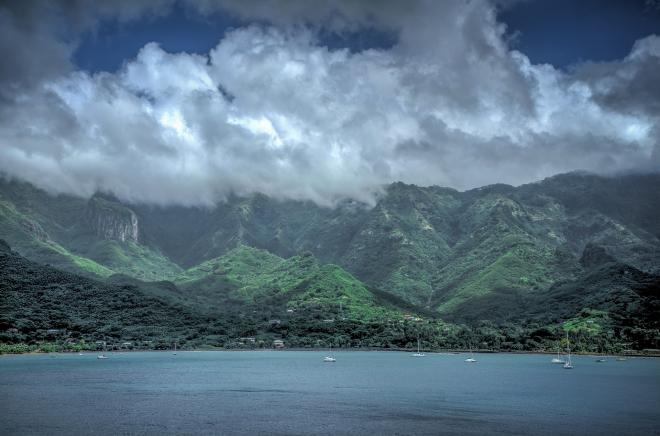Tracking South Pacific responses to climate change
The below case study shares some of the technical details and outcomes of the scientific and HPC-focused programming support provided to a research project through NeSI’s Consultancy Service.
This service supports projects across a range of domains, with an aim to lift researchers’ productivity, efficiency, and skills in research computing. If you are interested to learn more or apply for Consultancy support, visit our Consultancy Service page.
Research background
At the Victoria University of Wellington (VUW) School of Geography Environment and Earth Sciences, Senior Lecturer Dr Dan Sinclair and PhD student Susan Al Hafid are studying how rainfall in the tropical South Pacific might be influenced by climate processes.
Palaeoclimate reconstructions seem to imply that rainfall in the region can be sensitive to climate processes occurring in the high northern latitudes on Glacial timescales. However, the teleconnections linking these two parts of our planet appear to change across 10s of thousands of years. The VUW researchers hypothesize that the changing distribution of solar energy associated with changing orbital precession and obliquity may modulate the teleconnections, likely through changing sea-surface temperature gradients. Funded by a Marsden grant, they are using a combination of palaeoclimate reconstructions (using stalagmites), and computer simulations, using the coupled ocean/atmosphere code 'CSIRO Mk3L'.
Project challenges
As part of Susan's PhD project, she is running the CSIRO Mk3L climate system model to gain insight into the dynamics of the tropical South Pacific atmospheric circulation system.
The CSIRO-Mk3L code is optimized for palaeoclimate simulations (running at a reduced spatial resolution). Susan and Dan aim to set up a series of experiments where they 'perturb' a glacial background climate state to simulate a 'Dansgaard-Oeschger' event (a rapid warming associated with transient resumption of the thermohaline circulation in the North Atlantic). In the model this can be achieved by manipulating the freshwater flux to the North Atlantic ocean. They will study the evolution of the climate over ~1000 model years, looking at how the changes in the North Atlantic propagate to the tropical South Pacific. They will then repeat simulations changing the orbital boundary conditions to see how this changes the high/low latitude teleconnections.
These climate modelling scenarios require intensive computing resources, with each simulation often taking several weeks of computing time. Dan and Susan sought assistance from NeSI team members to port the CSIRO Mk3L code to NeSI platforms, and get help with writing pre-processing and post-processing scripts.
What was done
Ported the CSIRO Mk3 code to Mahuika. The code requires the intel/2017a compiler to compile and run successfully when using more than one OpenMP.
Assisted Susan with the creation of a Jupyter kernel with cartopy, xarray, matplotlib and other packages installed.
Assisted Susan with computing summary statistics of CSIRO Mk3 data, including monthly averages of precipitation across seasons and years, and global temperature averages.
Main outcomes
Ability to run Mk3L on NeSI’s platform
A set of instructions to build the code and its dependencies
Upskilled researchers on using Python packages for processing results and creating summary plots
Ultimately, insights from Dan and Susan's investigations will contribute to a better understanding of how Earth’s climate might respond to future global warming.
Do you want to bring your research to the next level? Send an email to support@nesi.org.nz.







